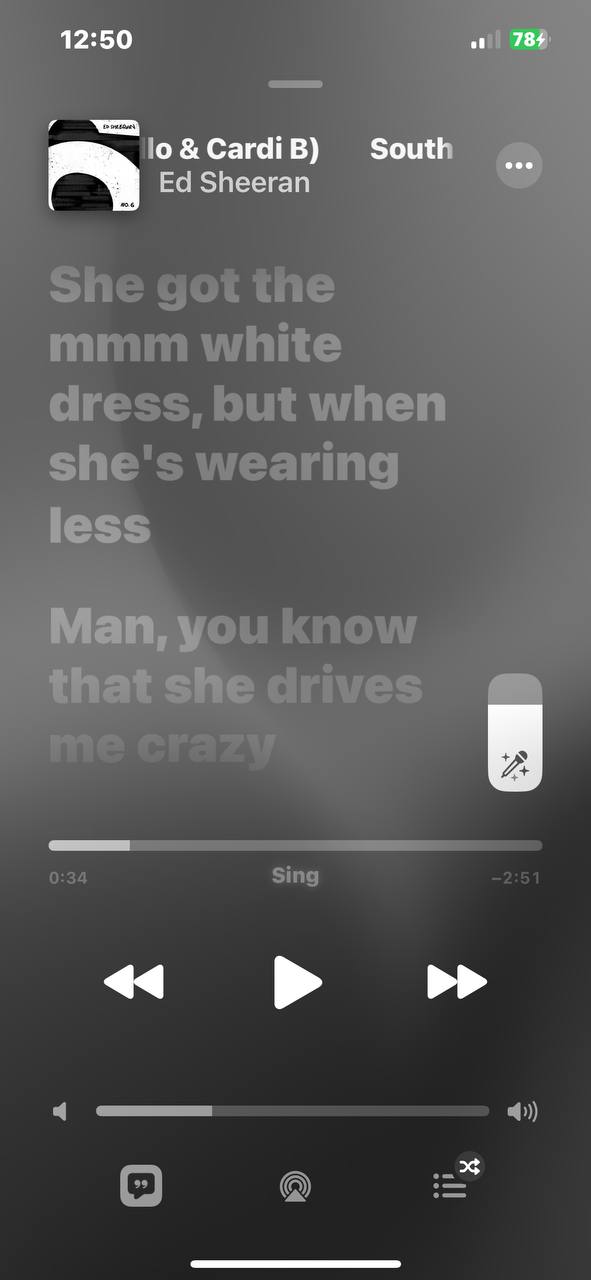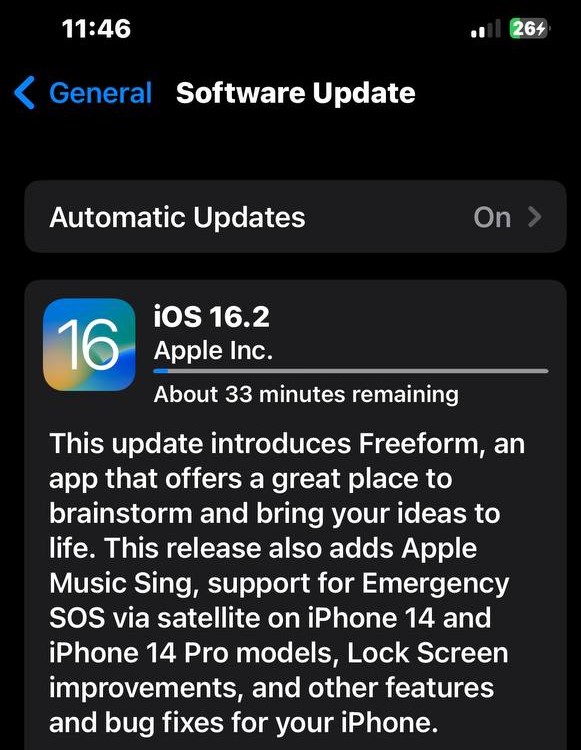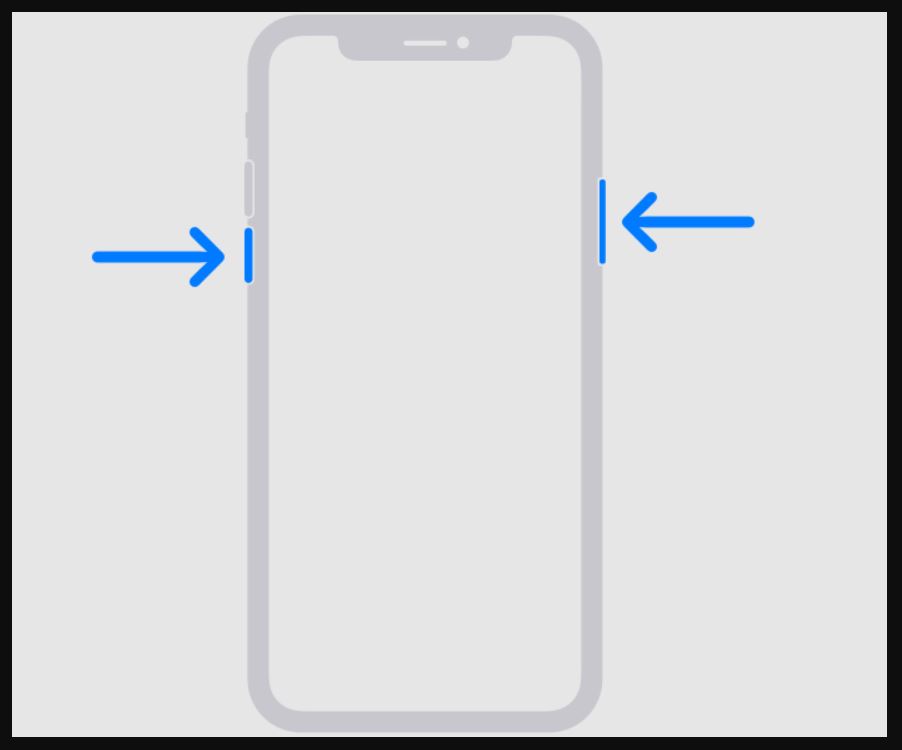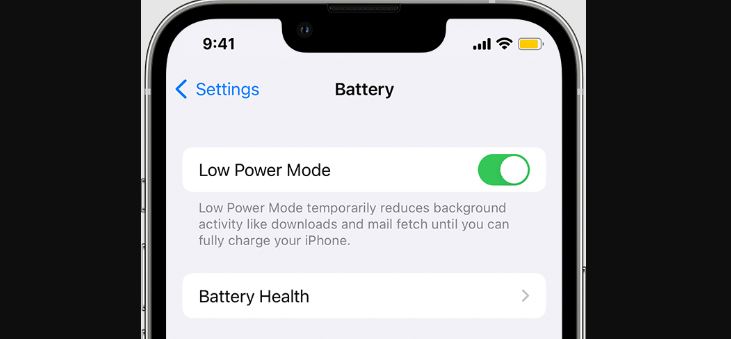On 13th December, iOS 16.2 officially began rolling out to all supported devices. It rolled out a month after iOS 16.1. This update is arguably more significant than the previous one regarding added features. It also refines the iOS experience by patching bugs and has the usual security patches.
iOS 16.2 brings Advanced iCloud Security, which is end-to-end encryption for iCloud. You get a new app called Freeform, which is a fun little whiteboard tool. It has collaborative features and can also be used casually. It also brings 5G support for iPhones in India and adds a few lock screen widgets.
What is Apple Music Sing?
iOS 16.2 added several new features, and a noteworthy one is Apple Music Sing. Earlier, when playing a song, it was used only to display the lyrics. Now, there’s a new feature within the song you’re playing. A small music icon pops up.
You now have the option to sing along with the original song in a sort of duet style with the creator. You can also modify the volume of the lyrics to your liking. You also have the option to sing the song with the karaoke tune, basically only the instrumentals.
The feature is enhanced with additional features like Background Vocals. If many lines simultaneously are said in a particular song, you can make them move independently of the primary vocals. You can also sing along with animated lyrics.
In duet mode, multiple vocalists appear on opposing sides, making the interface fun and intuitive. All this sounds great, but how do you use these incredible new features?
How to Enable the Apple Music Sing feature?
- Launch the Apple Music app. (Note: This feature only works if you have an Apple One or Apple Music subscription. If you don’t have one, you cannot use this feature.)
- Choose the preferred song you want to use this feature with.
- Once the song starts playing, tap on the quote mark symbol for lyrics in the bottom left corner.
- Now, tap on the microphone symbol with some stars on the icon. This should activate the feature.
- You can drag the icon to adjust the vocal volume and sing along with beat-by-beat lyrics.
This feature is even better for those who use AirPods that support Spatial Audio since you can sing duets with your favorite artists and make the whole experience surreal. Unfortunately, not everything seems smooth sailing with this update because the feature isn’t showing up for many users.
6 Ways to Fix Apple Music Sing Not Working or Showing Up
Many people have complained that the toggle to enable the feature was missing. If you have this issue, try the below troubleshooting methods.
1. Ensure that your device is on iOS 16.2 and has the latest version of Apple Music installed
- Go to the Settings page and go to the General menu.
- In the General Menu, tap on Software Update. It will now automatically begin checking for updates.
- If it’s on the latest version, you should see iOS is up to date. You should also know the version number as 16.2.
- Now, go to the App Store and ensure that Apple Music is on the latest version.
- Pick the song you want to try to enable the Apple Music Sing feature.
2. Try the feature with another song
While this may sound dunce-like, it’s essential to know that not all songs have this feature. If the songs you initially chose do not support this feature, they may do so after an update in the future. You can now try this feature on other songs, preferably popular tracks. Look for the microphone icon.
3. Restart your iPhone and make sure you have internet access
Cliche as it may seem, the good old restart does work in case of a technical glitch. First, clear the app from your RAM before you restart the phone. Restarting has always been an effective way to get rid of minor bugs.
It might be a bug or temporary malfunction if you’re on the latest iOS 16.2 and still don’t see it. A restart usually solves this. Also, ensure you’re connected to Wi-Fi or the Mobile Data is turned on. After restarting your phone and connecting to the internet, relaunch the Apple Music app and try it again.
You probably don’t have to go to the lengths of completely resetting your software to factory settings; that process is cumbersome and annoying. Only doing this as a last resort is recommended if nothing else seems to help.
4. Uninstall and install the Apple Music app
Due to unexplained server glitches or other technical difficulties, the feature might not have made it to your app. To uninstall, long-press the app and press the X button. Then, confirm the uninstallation.
You’ll have to go to the App Store and download the Apple Music app. It might ask you to sign in to iCloud once more. Once done, check if the feature has now been enabled for you.
5. Check if your device is compatible with this feature
The iPhone 11, 12, 13, and the latest iPhone 14 series support this feature. It works on the tenth and ninth generations of vanilla iPads. It also works with the iPad Mini 6. The entire M1 lineup of iPads, the iPad Air and Pro, supports this, and the latest M2 iPad Pro also supports this feature. Apple Music Sing is available on the latest SE 2022 powered by the A15.
The 2022 Apple TV 4K is compatible as well. While other iPad Pros and the iPhone SE 2020 are not officially supported, they might be added later. Provided your device isn’t on the list, it won’t receive this feature.
6. Disable Low Power Mode
While this may surprise you, Low Power Mode might sometimes stop this feature from working. Since Apple Music Sing involves heavy use of AI and is taxing on the CPU, Neural Engine, and Battery, Low Power Mode might restrict it from functioning in the first place.
You can turn it off by tapping the battery icon in your control center. You can also disable it from the Battery page in the Settings app; an option called Low Power Mode must be turned off.







